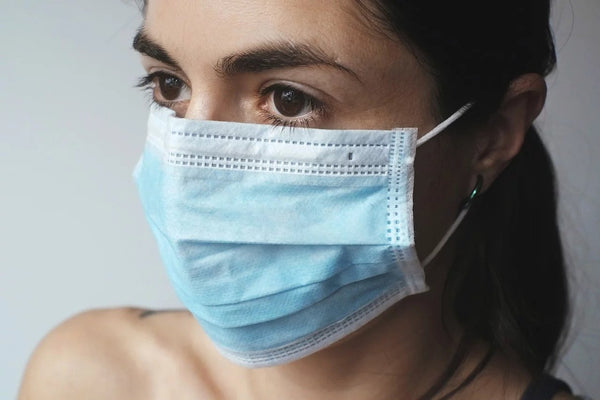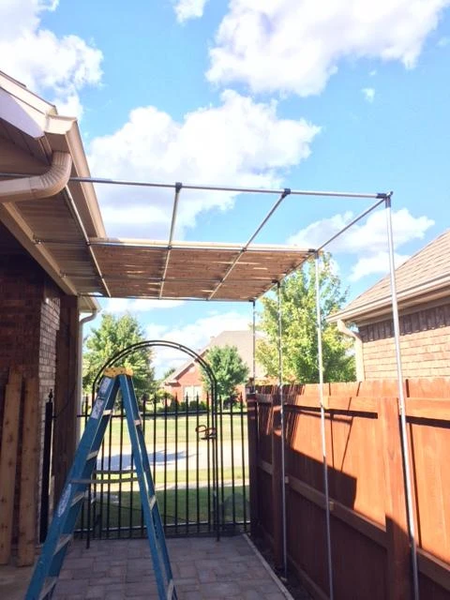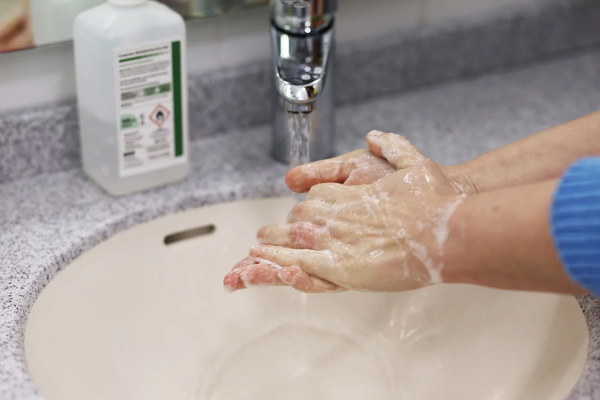Your Cart is Empty

As the coronavirus pandemic continues to spread around the world, our family has become more aware of the importance of disease prevention and survival preparedness at home.
While most states have taken action to prevent the spread of the disease, many people still need to leave their homes to go to work, risking potential exposure to the disease.
High-risk people such as adults over 65, children under 5, and immunocompromised individuals must practice social distancing and disease containment at home to reduce the risk of contact.
Temporary isolation barriers like a containment room can help to prevent the spread of airborne contaminants, especially if you have any at-risk family members in your home.
Recent findings suggest the virus can remain active on hair and clothes for up to 9 days after exposure. This means that by simply being outside, you risk transmitting the virus to others in your home. The safest and most effective way to avoid bringing COVID-19 into your home is by using a DIY containment room.
A containment room enables you to undress and bag your clothes, cover your hair, and change into uncontaminated clothes before entering your home. Once the potentially contaminated items have been contained, you can go straight to your laundry room to wash your clothes, and then take a long, hot shower to remove traces of the virus from your hair and body.
A containment room can also be used for isolating family members who may have been exposed to the virus.
With more cases of the virus occurring every day, many healthcare facilities are already overloaded and running out of space to care for patients. To help ease the burden and prevent the spread of COVID-19 through hospitals and clinics, we are partnering with several medical companies to help build healthcare solutions.
Some of the projects we are completing include temporary chairs and cots for treating patients, but one of the most effective ways to help reduce the impact of the virus is with temporary isolation rooms, which minimize the exposure of healthcare workers and at-risk patients to coronavirus.
Infection Control Risk Assessment (ICRA) is an integrated process that uses multiple methods for containing and reducing the spread of infection. It is typically used by engineers and architects when designing healthcare facilities and by hospitals to prevent infections spreading within the building.
You can ensure your home or healthcare facility adheres to the ICRA infection control requirements by including these features in your temporary isolation anteroom:

If you are building a containment room at home, the ideal place is in a backyard or on a patio to create an anteroom of the back entrance. However, depending on the available space you have, you can also build a filtered containment area on the inside of your home around the primary entryway.
For private and public healthcare facilities, an isolation anteroom built out the front of treatment rooms and labs allows healthcare workers to decontaminate upon exiting the room or apply protective gear such as gloves, gowns and respirator masks without being exposed to the virus.
At home, we decided to build a full containment room on the back porch to prevent the spread of infection. The structure is based on a simple box frame that is easy to put together.
This structure is also an ideal way for hospitals and clinics to create temporary individual containment rooms to isolate coronavirus patients from other immunocompromised patients in the facility.
To build your DIY containment room, you will need:
Instructions:
While a free-standing containment room is an excellent option for outdoors, you can also section off a room in your home or a small space around your entryway by using Maker Pipe and EMT conduit to build a temporary indoor wall. We based the design on a dust containment room.
While this may not offer the same protection as a containment unit, isolating yourself to remove potentially contaminated clothes can significantly reduce the risk of bringing COVID-19 into your home. This is also the ideal design for hospitals and clinics to create a temporary anteroom around entrances to treatment wards and labs.
To build a temporary indoor wall, you will need:
Instructions:
In addition to building a containment room, you can reduce the spread of infection with just a few simple COVID-19 prevention measures.

Washing your hands often is the single best way to help prevent the spread of COVID-19. Use soap and warm water and wash your hands for at least 20 seconds (we sing the “Happy Birthday” song twice). Don’t forget to clean under your nails and down your wrists.
When you can’t get to a sink, use hand sanitizer after touching handrails, door handles, money, and other high-risk surfaces.
COVID-19 is spread from person to person primarily through hand-to-hand contact. Rather than shaking hands when greeting someone, wave, bow, or use some other mutually agreed way to greet friends and family.
One of the simplest methods for disease prevention is also one of the hardest to do. Your eyes, nose, ears, and mouth are all entry points for the virus, so you must avoid touching your face as much as possible.
Now is not the time to be socializing with friends. As much as possible, isolate yourself and your family at home, only leaving for essential supply runs and medical services. Use this time to reconnect with each other by doing some fun Maker Pipe projects together.
If you need to leave your home to restock on groceries and supplies, or for other essential services, make sure to practice safe social distancing. Keep a minimum distance of two meters between yourself and the next person at the grocery store and avoid crowded places. You don’t need to wear a mask unless you are sick. Save vital medical supplies for the doctors and nurses who need them.
You can help protect your family, yourself, work colleagues, and your patients from coronavirus by building a barrier to infection with a DIY containment room. Maker Pipe structural pipe connectors can help you construct a quick, easy, and safe isolation area for your home to ensure that everyone remains safe during this challenging time.
A DIY containment room can be built in an afternoon and used at home, in a rural hospital, a clinic, or any other space where the spread of COVID-19 needs to be controlled.
Contact us at (843) 245-9747 to find out about our range of structural pipe connectors and how our products can help you easily and quickly transform your space for a healthier environment.